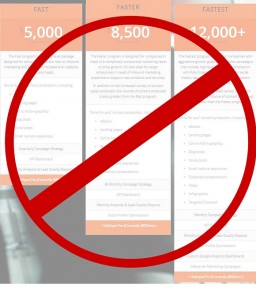Don’t confuse your “wants” with the “needs” of the user / client.
As a designer, it can be very easy to form an opinion, and subsequently design a platform that looks great to you.
Don’t forget: UX is all about the audience and the users of the application or website, and sometimes you may not necessarily love the outcome of a design.
Chances are that you and the end user have different wants and needs, however, you must keep in mind that UX is about the user, and not you.
As a UXD, you are not supposed to be proving something with your design, your end goal should be to help the user and audience of the application navigate through the application seamlessly with a nothing-but-positive experience.
This is where UX research comes into play. A solution to this problem is to do enough qualitative and quantitative research to identify what the real problems are (instead of just guessing on what you think is wrong).
Balance coherence with your desire to be creative.
Many businesses and consumers want their website or application to be as creative and innovative as possible. While this makes natural sense, clarity and coherence should always be a priority over creativity.
Why? Because creativity isn’t always what drives conversions.
If a user has trouble navigating through a platform, you can simply say goodbye to that potential conversion. Better user experience means an increased conversion rate and a high ROI.
Example: if a user lands on your page and the visual design is amazing, but they click on an icon and it does something different than they think, they may not be as impressed as they first were when they landed on the page.
Solution: conduct some user testing to see if your users are completing tasks the way you want them, and that they are going down the correct conversion funnel. See if the navigation they take is different than you intended.
Try not to break design standards.
Navigation at the top, CTA at the top with a contrasting color, a large headline with a sub-headline, and the cart at the top right (if eCommerce).
These are some design standards that come with a website prototype. If you’re designing for a specific product or company, there are even UX, UI and usability guidelines that you should be following.
While this may seem basic and boring to you, it may not be the smartest idea to break away from these prototype and design standards.
Getting back to my last point, these standards are clear and coherent, which is why they are considered ‘standards.’ Users do appreciate simplicity as well as creativity.
If your prototype is not new, different and exciting, sometimes it is okay as long as it still has a visually pleasing design and is simple to use.
Performance in UX
Website or application performance is often overlooked and ignored in UX. However, page performance and page load time is equally as important (if not more) than the aesthetics of the platform.
It is said that up to 40% of users will leave your website if it takes more than 3 seconds to load.
Think about that. That’s really not very much time.
Users have high expectations for a website’s loading time. While this is not something that can specifically be worked on in the UX phase, it is something that a UX team must keep an eye on while the project is in the development phase. If it isn’t up to your standard of performance, it is also your duty (along with the developer’s) to speak up.
Digital & Social Articles on Business 2 Community(62)
Report Post





